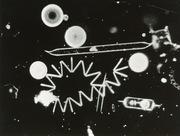The appeal and reviews of "Marine Snow": A thorough analysis of the beauty of the deep sea and the moving story

Marine Snow: The appeal of Hiroshi Manabe's experimental stage animationOverviewMarine Snow is an experimental stage animation work by Hiroshi Manabe that was released on November 26, 1960. It was screened at the Sogetsu Hall in Tokyo and was produced as a short film with only one episode. The original story is an anime original, and the soundtrack uses "Marine Snow", a poem by Hajime Kijima that was broadcast on NHK. It is also composed as an experimental stage show that combines pantomime movements of Kanze Hideo's Noh plays with changes in lighting. Production background and conceptManabe Hiroshi is an animation artist known for his detailed illustrations, and in this work he presents the concept of "animation for the stage." The work itself uses a technique in which cut-outs of sea creatures are placed on various screen tones, and movement is created by controlling camera tracking up and down. This technique has been praised as an attempt to combine the technology of the time with artistry. Main Staff
Details of the workMarine Snow uses the broadcast poem "Marine Snow" by Kijima Hajime, which was broadcast on NHK, as its soundtrack. This broadcast poem is a poetic work that describes the deep depths of the ocean, and Manabe Hiroshi expressed the atmosphere through animation. In addition, the contrast between stillness and movement is emphasized by incorporating the movements of Kanze Hideo's Noh play in pantomime. The lighting changes were handled by Imai Naoji, and are an important element in enhancing the overall atmosphere of the stage. Technical featuresOne of the technical features of this work is the technique of cutting out and placing sea creatures on screen tones. This creates a fantastical atmosphere while realistically recreating the depths of the ocean. In addition, the technique of creating movement by tracking up and down the camera was an innovative attempt that made full use of the technology of the time. This technique has influenced later animation works. Evaluation and impactMarine Snow is highly regarded as an experimental attempt by Manabe Hiroshi. In particular, the technique of fusing stage and animation can be said to have breathed new life into the art world at the time. The work was also shown at an anime screening by the three men, conveying its appeal to a large audience. The work's evaluation is detailed in the Planet Edition of "History of Japanese Animation Films," co-authored by Yamaguchi Katsunori and Watanabe Yasushi, and highly praises Manabe Hiroshi's artistic and technical abilities. Recommendations and how to watchMarine Snow is a work that allows you to fully appreciate the artistry and technical ability of Hiroshi Manabe, and is highly recommended for anyone interested in animation and performing arts. The work itself was screened at the Sogetsu Hall in Tokyo, so it may be difficult to view it on DVD or online at present. However, it may be possible to see it at animation screenings or exhibitions held at libraries and art museums. You can also gain a deeper understanding of the background and production process of the work by reading related books and papers. Related works and artistsManabe Hiroshi has produced many other works in addition to Marine Snow. In particular, many of his works use detailed illustrations and experimental techniques, and he is known as an artist who combines artistic and technical skills. He also has other works that incorporate Kijima Hajime's broadcast poetry and Kanze Hideo's Noh movements, each of which has its own unique appeal. By watching these works, you will be able to gain a deeper understanding of Manabe Hiroshi's artistic world. summaryMarine Snow is an experimental stage animation work by Manabe Hiroshi that combines artistry and technical skill. Its unique expressive method, which combines NHK's broadcast poetry with the movements of Noh, is praised as an attempt to combine the technology and artistry of the time. By understanding the background and production process of the work, you will be able to feel more deeply into Manabe Hiroshi's artistic world. Please watch this work and enjoy its charm. |
<<: The Ikedaya Incident: Review and impressions of an anime depicting a turbulent history
>>: "Naval Battle" Review: A fascinating maritime anime that combines tactics and drama
Recommend
Despicable Me 4 Chinese version voice actors announced Dapeng and Zhuang Dafei voice
Today (June 15), Illumination Entertainment's...
"The Swordsman's Miko" OVA new character design revealed, voiced by Kawase Maki
At present, the official of "Toji no Miko&qu...
Casting Completed, Halo TV Series Now in Production
The "Halo" series produced by Showtime ...
The Lion King: The Legend of Mufasa new trailer released on December 20
Today (August 10), a new trailer for "The Li...
"Kokoro wa Hallelujah": A thorough analysis of the moving and appealing aspects of Minna no Uta
"Kokoro wa Hallelujah": NHK's short...
Warner CEO: DC Universe will reduce linkage to get on the right track
Recently, it was reported that Warner's new p...
The official trailer of the action movie "Red Right Hand" was released, starring the elf prince Orlando Bloom
The action thriller film "Red Right Hand&quo...
P1S Dark Nights: Metal Cruel Knight Batman Statue Priced from $1,249
Recently, the famous model manufacturer Prime1Stu...
The makeup photos of the main characters of the Japanese drama "Movie Girl" by Katsura Masakazu are released. The goddess Nogizaka is beautiful and charming
The second installment of the latest live-action ...
The classic masterpiece "Major League 2nd" animation was postponed and the original plan was to replay the old episode on May 2nd
The official animation of "Major 2nd", ...
The PV of the TV animation "To My Immortal Love" is released: the immortal boy goes on adventure again!
The official has announced that the famous fantas...
The appeal and reviews of "Strawberry Panic": A masterpiece anime depicting the youth and conflicts of young girls
"Strawberry Panic": A tale of lilies bl...
Hellboy: The Crooked Man movie releases first trailer
"Hellboy: The Crooked Man ", directed b...
DC Titans Season 3 Official Trailer: The Master Retires by Death, Red Hood Appears
The third season of DC Titans has released an off...
The appeal and reviews of "The Beast's Bride": A deep story and beautiful visuals
"The Sacrificial Princess and the King of Be...









